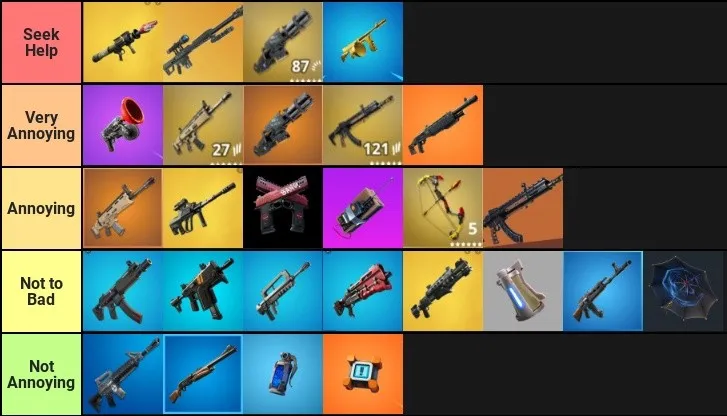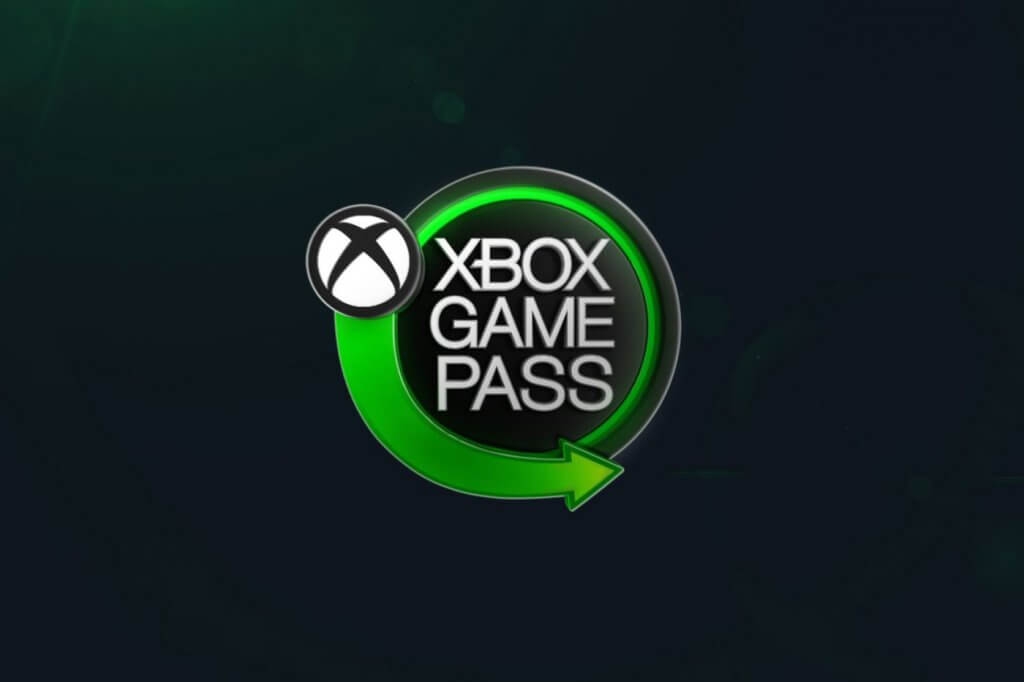A tier list is a simple rating system that divides a game’s or movie characters, different food items, combatants, weapons, maps, and other essential features into 4-5 categories. When moving from top to bottom, each ranking symbolises how good each aspect or characteristic is. Making a perfect tier list is not a piece of cake. It requires a thorough understanding of a video game, a movie, or anything that you are making a tier list of, expertise, and the ability to rank items in a logical sequence.
The internet is loaded with several fantastic tier lists websites. TopTierList is one of the best websites on the internet that regularly publishes posts regarding games, entertainment, and food-related tier lists. It is regarded as the best website for tier lists where you can find well-researched posts written by highly experienced writers. Some websites create tier lists-related posts as well. However, listing character hierarchy over 4-5ranks is insufficient to establish a tier list page. A thorough tier list should explain why a specific character, food item, weapon, armor, mission, or other gameplay feature is more valuable than the rest.
In This Article
The Origins of Tier List
Tier lists are one of the most controversial subjects and they can be a source of disagreement. A tier list is revered by many users, who base their whole character selection on it. Gaming Tier lists are helpful for players of all skill levels since they can help them figure out who has a better chance of winning in a competitive environment. It is possible to be bottlenecked by a character. However, tier lists presume that if both players are playing at the same skill level, the higher tier character would statistically succeed.
Street Fighter 2, released by Capcom in 1991, is widely credited for popularizing one-on-one, tournament-level video game competitions. The fighting game was first published as an arcade cabinet before being re-issued in 1992 on the Super Nintendo Entertainment System, where it went on to sell 6.3 million copies.
However, another decade would pass before the internet’s favorite tier list format was born. The ranking system was defined by a Smash Bros. Melee example in a 2004 Urban Dictionary definition for the word “tier,” implying that the passionate community surrounding Nintendo’s platform fighter has its tier lists. Tekken 4 (2001), on the other hand, is credited with introducing the internet to the types of tier lists that are now widespread.
Tier lists are most typically created for high-level competitive fighting games or movies. However, games with enormous character pools, such as the Dragon Ball Z series, can also tier lists. The first-ever tier list was published in 2005 and was uploaded in a Tekken resource forum by a user named Nothing, who ranked the characters in Tekken 4. While there were other tier lists before Nothing’s post, this was one of the first examples of the “Top, Mid, and Bottom Tier” pattern, which internet users would use for years.
Other gamers shared their lists and spelled up their arguments for why their favorite character deserved to be higher in the Tekken food chain, sparking heated debates. Nothing’s tier list format persisted from then on, and it was repurposed to rate different characters in other fighting games like the Mortal Kombat series. Other genres, such as the multiplayer online battle arena League of Legends, eventually adopted it (2009). The formulaic ranking of dozens of characters became a joke, especially in the Smash Bros. community, as tier lists rose in popularity and discussions raged about which characters should be at the top. Players started using the phrase “tyres don exits,” which is a deliberate typo of “tiers don’t exist.” This inside joke among Nintendo fans alludes to a now-deleted forum post by a Melee player who was so enraged by someone else’s tier list that they typed “tyres don exits” by accident.
Because of the contentious nature of tier lists, internet users created parody tier lists of their favorite candy and beverage brands, many of which expressed an intentionally unpopular stance to enrage and draw replies from viewers. One candy tier ranking, for example, proudly positioned bubble gum ahead of chocolate bar heavyweights like Kit-Kat and Reeses, which generally top lists.
Tier lists tend to enrage people and cause them to shout in the comments, which is why YouTubers and broadcasters decided to put their take on the nearly two-decade-old gaming tradition. They have grown so ingrained in popular culture that there will almost always be a tier list, on the other hand, a strong viewpoint.
Making a tier list post is hard work requiring concentration, skilled resources, experience, and research methods. A genuine tier list represents data logically and ranks characters of a game or a movie, armors, and other features in great depth.
Tier Lists Content
Tier lists, which evaluated movie characters to fast-food restaurants, were popular among YouTubers and video game players. During the peak of tier list popularity, users found the striped template with colored boxes all over the Internet. Tier lists are still widely used today to display opinions by ranking items.
It is undeniable that tier rankings can help you figure out which characters people are less prepared for. As a result, when players use low-tier characters, they are more likely to catch their opponents off guard, which can be an advantage in and of itself.
Tier lists should always include relevant and detailed information derived from well-researched content. Unfortunately, few publications understand how to correctly enlist pros and negatives to appropriately assess one character against another and rank them in their tier list. The majority of the websites just divide a game’s character into different tiers without explaining why one character is in the S-tier and the other in the C-tier. This is why tier lists must list characters and describe the data analytically, allowing the ranking system to make more sense.
Tier lists must also provide a diverse range of content. Not everyone enjoys Dark Souls 3 or the PvP mode in Elden Ring. On the other hand, players will need detailed posts covering many tier lists. Finding a trustworthy gaming website is a significant issue because only a few websites post tier lists the way they should be.
Many video games nowadays receive in-game upgrades monthly or quarterly, which alter the meta and thus the entire experience. This causes issues with tier lists released months before the last game update. The published tier lists must be updated if the video game is updated and the meta changes. This will help gamers keep up with the current trends in the video game they’ve been playing and keep track of tier lists on websites. Tier lists are created to resemble the order in games that contain a large number of characters.
The main disadvantage of the tier list is that it may become outdated as a metagame develops or when new characters are introduced, and updates introduce gameplay-altering changes. Furthermore, tier lists that are not entirely based on statistics and community results will almost always have some prejudice based on the tier list maker’s experiences and beliefs.
Uses of Tier Lists
A tier list is a popular graphic representation of a person’s subjective ranking of individuals of a connected group. For example, one vegetarian could create a tier list with their favorite vegetables in the top tiers and the veggies they don’t like in the bottom tiers. They could also rate these vegetables depending on other factors like their taste, smell, growth period, etc.
The levels are usually specified in a tier list and can change based on the template used. Many tier lists feature an A through E scale, while others use terms like “legendary” or “the worst” to explain what each tier signifies. The following levels make up one of the most prevalent tier list templates, which is based on Japanese academic scores:
S Tier
A Tier
B Tier
C Tier
D Tier
E Tier
Explanation of SABCDE Tiers
Tier lists may be an excellent resource for many gamers and bloggers and they can show just how powerful a character or an item is compared to their competitors. They’re also a perfect way to interact with other gamers and simply talk about some of your favorite features of a game. As mentioned above, there are various tiers in a tier list. It is time to explain what each of them means.
S Tier
The S tier in a tier list is usually interpreted as “superb” or “super,” It is the highest-ranking on the tier list template. You can change tier list labels, and you may insert a row for “SS” above the S tier at times. The S tier is often referred to as the God Tier. A character in an action fighting game, a movie character, or anything else ranked S in a tier list would be regarded as the best, OP, elite, or any other term you choose to use.
A Tier
Characters in the A tier have several powerful tools and can outperform the majority of the other characters in the game without putting themselves in danger. These characters are not included in the S tier because they either have a few niche matchups with low-tiers that they lose somewhat or a particularly awful matchup with the S tier.
B Tier
Characters in the B category are those who are “above average.” They have decent toolkits and matchups that are often reasonably even. They can do a lot of things well. If you have just started playing a new game and searching for a good character, we recommend looking at B-Tiers, since they’re generally easy to pick up and learn the fundamentals with.
C Tier
Characters listed in the C tier are referred to as the average characters. They can get the job done and aren’t horrible, but some characters simply outperform them. Such feelings are neither too good nor too bad. Overall, they are pretty average when it comes to their performance and skill set.
D Tier
Up next is the D tier, which lies below the C tier. Characters in the D tier are below average and serve no useful purpose. These characters are used for experimentation by pro players who understand the game well and want to try something different. Apart from that, these characters are not too bad because those characters lie in the E tier. However, beginners should not prefer playing with these characters.
E Tier
The E tier in the tier list includes the worst of characters. Characters listed under the E tier are way below average and have no skill set. Players should avoid such characters at all times. It is worth noting that even experienced players do not like to play with these characters to find out their strengths because there aren’t any.
Conclusion
A tier list is a concept where different game or movie characters, food items, etc, are ranked based on their specific characteristics across 4 to 5 different levels called tiers. Tier lists are helpful for beginners or newbies who want to find out more about the characters in a particular game or a newly released movie. Although, because of frequent updates in games monthly or quarterly, some people may find tier lists useless. However, one cannot deny their importance.
According to different research, a point might come where tier lists might get obsolete. But we think that would not be possible anytime soon because the concept of tier lists is still trending, and hundreds and thousands of posts regarding tier lists are published daily. This is one of the significant indicators that the concept of tier list is here to stay for a bit longer than expected.
Many internet users regard a tier list as scripture rather than a well-informed recommendation, leading to unneeded tussles. Tier lists aren’t just for professionals; just remember to apply your best judgement and identify where your particular skill sets can outperform the tier list.




